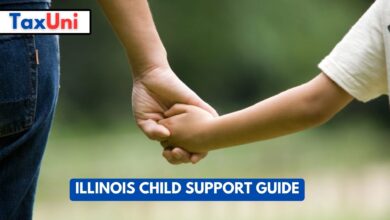North Dakota Child Support Guide
In North Dakota, both parents are obligated to support their children. The amount that parents pay each other varies depending on their circumstances and custody arrangement.

The state child support program can help you set up an order or modify one, as well as help with enforcement of a current order. It can also help establish paternity and resources that may be available to you. North Dakota uses guidelines to determine child support payments, and the obligor parent’s income is considered in that calculation. However, the court can deviate from those guidelines in special circumstances, such as if the obligee has extraordinary medical expenses or needs, or if the parties have agreed to a different amount of child support.
Most obligors are subject to an income withholding order, which means that their employer will deduct their child support payments from their paycheck and send them to the state disbursement unit. This can make it easier for obligors to keep track of their payments and ensure that they are received on time.
In most states, stepparents are not obligated to pay child support for their stepson or daughter. In North Dakota, that is not always the case, but it does depend on whether or not they are legally married to the children’s natural parents.
How Does the North Dakota Child Support Program Work?
North Dakota child support guidelines include:
- A formula that calculates payments based on both parents’ incomes.
- The number of children.
- Custody arrangements.
The guidelines allow judges to deviate from the standard calculation when a preponderance of evidence shows that doing so is in the best interests of the child or children.
A judge may also award one parent or both parents health insurance coverage, disability coverage, and/or life insurance benefits. The guidelines also consider other expenses and deductions, including spousal support, union dues, occupational license fees, and gifts and prizes over $500 a year. North Dakota child support payments are enforced by the Division of Child Support Enforcement, which uses a variety of tools to collect and enforce unpaid support. These tools include income withholding, tax refund intercept, reporting to credit bureaus, suspending driver’s and professional licenses, denying passport applications, and freezing and seizing property.

Key Notes About North Dakota Child Support Laws
- Both parents are responsible: North Dakota law requires both biological parents to financially support their children.
- Non-custodial parent pays: Typically, the parent with less parenting time (usually the non-custodial parent) pays child support to the parent with primary custody (custodial parent). This is meant to help cover the child’s expenses.
- Child support guidelines: The North Dakota Department of Human Services establishes child support guidelines that courts use to determine the amount of child support owed https://www.childsupport.dhs.nd.gov/partners/lawyers/child-support-guidelines. These guidelines consider factors like the income of both parents, the number of children, and childcare costs.
- Custody arrangements: Child support is calculated differently in cases of split custody or equal residential responsibility https://www.childsupport.dhs.nd.gov/partners/lawyers/child-support-guidelines/current-child-support-guidelines. There are provisions for subtracting one parent’s obligation from the other’s to determine the net amount owed.
- Support ends at 18 (with exceptions): Child support typically ends when a child reaches 18 years old. However, if the child is still attending high school and living with the custodial parent, support may continue until they graduate or turn 19 (whichever comes first)
- Agreements beyond legal limits: Parents can agree to extend child support beyond these legal limits, such as to help with college costs.





